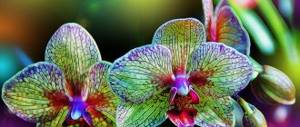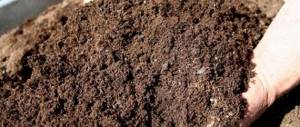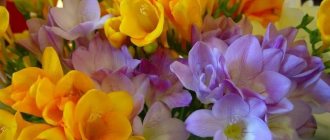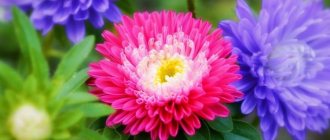If you have a country house, then the question of how to spend your leisure time most likely does not arise. Of course, gardening in your favorite area. If you want to decorate your corner of paradise, plant perennial flowers on it. What are the best perennial flowers to plant? Photos and descriptions of the most unusual garden plants are in the article. Read and get inspired.
Photo: pixabay.com
Garden perennial flowers: crocuses
Crocuses (or saffron) are herbaceous perennial flowers from the Iris family. They are found in the wild - in forests, meadows, steppes, and are also used by gardeners as an ornamental plant. There are about 80 species of crocuses in nature, and more than 300 different varieties have been bred.
These perennial flowers are low-growing, the plant height is no more than 10 cm. The crocus flower itself is goblet-shaped. It can have different colors - orange, lilac, white, blue, purple and cream. There are also varieties in which the flowers have a two-color or spotted color.
Some varieties of saffron are used in the food industry:
- as spices;
- as a dye (flower stigmas contain a yellow pigment that is added to foods).
The plant is also used in medicine and light industry.
The flowering period of a plant depends on its type: some crocuses bloom in early spring, other types in late autumn. For a comfortable existence, they need loose soil, as well as a lot of sunlight. Although these perennials will feel great in the shade of trees.
Photo: pixabay.com
Perennial flowers for the garden: muscari
If you have been looking for perennial flowers for a long time - unpretentious, but at the same time with a beautiful appearance and a strong smell - then you will definitely like muscari. There are about 60 plant species in nature, most of which are decorative.
Perennial flowers, the names of which are quite varied (“muscari”, “mouse hyacinth”, “viper onion”), have an unusual appearance. The height of the plant is about 30 cm, while on the leafless peduncle there is a cluster of small (no more than 0.5 cm) buds. These are six petals fused together. Color ranges from white to purple and dark blue.
Muscari do not require special care and are quite capable of reproducing on their own. These are one of the earliest spring flowers and are often grown as cut flowers. They have a strong, pleasant musky scent, which is where their Latin name comes from.
Photo: pixabay.com
Bush flowers: dicentra
If you need beautiful and unusual perennial flowers for your garden, pay attention to dicentra. This herbaceous plant belongs to the Poppy family. North America and Asia are considered the homeland of wild dicentra.
These bush flowers grow in height from 30 cm to 1 m. The appearance of the plant is very impressive - its small flowers, collected in an arched drooping inflorescence on a stem, are heart-shaped. Moreover, their color can be pinkish, pale red, white and even yellow.
Dicentra is an unpretentious and not capricious flower, characterized by high frost resistance. For such perennial flowers to feel comfortable, they do not need much, namely:
- drained soil rich in humus;
- sufficient humidity;
- shadow.
The best time for planting is April–May or September–October.
Photo: pixabay.com
What flowers love moisture?
If your garden is dominated by wet or marshy soils, pay attention to moisture-loving plants that can also decorate an artificial or natural pond in your garden.
The following plants are moisture-loving flowers:
- Iris is a well-known flower that can often be found blooming in May. Irises stand out among other flowers with a rather unusual color palette; on their petals you can find a variety of shades of purple and yellow, and you are unlikely to find two identical flowers. Photo:
- Forget-me is a cute garden flower with an original name. Forget-me-not flowers are small and have blue, pink or white petals with a yellow center. Forget-me-nots grow thickly in the flowerbed and cover the entire ground, forming a kind of carpet. This plant loves moist soil and shaded areas of the garden. Photo:
- Astilbe looks quite unusual, but at the same time very impressive. A large plot planted with astilbe looks like a real fairy-tale forest. Astilbe panicles are white, pink, red, and burgundy. The plant loves coolness and partial shade, the flowering period lasts from June to August. Astilbe, due to its frost resistance, is ideal for cool regions.
You may be interested in: How to create a rose garden in the garden: the most popular types of roses, choosing a variety and caring for it
- Huge and amazingly fragrant peony are familiar to everyone. In addition to its aroma, peony has a wide variety of colors; even the leaves of the flower change their color throughout the year from crimson-red to deep green. Peonies are perennial flowers that can grow in one place for decades. Photo:
- Swimworts are moisture-loving flowers, the color of which varies from pale yellow to red-orange. The swimsuit blooms in April and May. In the sun the plant produces more flowers, and in the shade it grows to almost a meter. Photo:
Perennial garden flowers: chrysanthemum
Looking for beautiful garden perennial flowers? Decorate your garden with chrysanthemums. The name of the plant is translated from Greek as 'golden-flowered', which is explained by the presence of a yellow core in the flowers of any species.
In Asian countries, chrysanthemum is highly revered; some of its varieties are used in folk medicine and are also eaten. In Japan, the chrysanthemum is considered a sacred flower.
Chrysanthemums are herbaceous plants or shrubs (depending on the species). There are a huge number of their varieties. This plant is most valued by gardeners for qualities such as:
- brightness of color;
- decorative properties;
- long flowering;
- ease of reproduction.
Chrysanthemums are very popular garden flowers. And this is no coincidence. The plants are unpretentious, very beautiful, their flowering period is quite long - from August until the first frost. Chrysanthemums are often grown for cutting, as beautiful bouquets of these flowers remain fresh and do not fade for several weeks.
Photo: pixabay.com
Perennial garden flowers: catalog with photographs and names
Every summer resident has a list of favorite flowers to decorate their area. This usually includes eukaryotes, which are highly decorative and easy to care for. Let's consider perennial garden flowers, which are especially popular.
Spring flowers perennials
Peony
This is a powerful plant that has a pleasant fragrance. Peony blooms in spring. It can grow in one place for more than 20-30 years without replanting. Growing a crop does not take much effort. Much attention is paid to choosing a suitable location. It should not be in the shade. Drafts are undesirable.
Peony grows excellently in loam. It is replanted at the end of August or beginning of autumn, and is not watered too often.
Pansies
They are also called "viola".
Flowers have a large number of shades:
- white;
- blue;
- yellow;
- reddish;
- black.
The preferred growing conditions for pansies are sunny areas and moist loamy soils. It is important to regularly feed them with superphosphate and ammonium nitrate.
Persian poppy
Early in spring, light green leaves appear from under the snow, and at the beginning of summer, large bright corollas of Persian poppy appear. This is a tall plant that harmonizes perfectly with other flowers. It is used as a background for low representatives of the garden, as a separate specimen of a flower garden.
To prevent the stem from lying on the ground, it is necessary to install a support. Poppy does not tolerate excessive watering. The best place for growing is considered to be the sunny side with fertile soil.
Perennials blooming in summer
Iris
This is one of the most attractive perennials and is easy to care for. Iris is watered in dry weather and the flower stalks are cut off. It grows in one place for about ten years and looks great in mixed flower beds. Iris is thermophilic and prefers places where light falls. It is important to water the plant regularly.
The flower can be colored blue or dark purple. There are many different varieties available. The most popular Snow Queen, Imperial Opal.
Astilbe
The eukaryote blooms with panicles and delights gardeners with its beauty from June to the end of summer. The color range is amazingly diverse. White with a creamy tint, pink, red and even lilac crops are grown. Their delicate aroma is similar to the fragrance of bird cherry.
The plant prefers the northern part of the site, where there is shade. However, some varieties should only be grown in full sun. Astilbe loves loamy layers of soil saturated with potassium and phosphorus.
Gladiolus
Everyone's favorite gladioli have flowers that look like sharpened swords. The plant looks very organic thanks to its original and delicate color scheme and unexpected corrugation pattern. There are about 170 species of gladioli.
The plant responds well to soil with sand and clay and loves organic fertilizers. Flowers require protection from ultraviolet rays.
Gazania
The plant blooms throughout the summer season and has a wide palette of shades. Gazania leaves are dense and rich green. Their shape depends on the variety. The color range varies from orange to pink.
Gazania is often used in landscape compositions. For full growth, a sunny side and an open area are required. Stagnation of water in the surface layer of land is unacceptable. The perennial loves moderate watering.
Alyssum
Alyssum is a low plant with shoots that bear small flowers. Its color varies depending on the variety. Often the perennial is used to fill empty areas when the spring bulbs have faded.
Popular varieties:
- Tiny Tim (lush white reproductive organs);
- Violet Konigin (purple flowers);
- Easter Bonnet Deep Rose (deep pink color).
Flowers are distinguished by their great love of sunlight and tolerate drought well. They are able to survive frosts down to minus ten degrees.
Clematis
Clematis, which has many advantages, will be a worthy decoration of the garden:
- durability;
- endurance;
- winter resistance;
- long flowering time.
Low-lying areas adjacent to gravitational waters are not suitable for planting. The soil selected is sandy or loamy.
Lupine
Depending on the variety, lupins grow to different heights. Sometimes they reach one meter. Their inflorescences are elongated. The color palette is extensive. There are white, purple, pink, yellow, and blue specimens.
Planting and caring for lupins is a real pleasure. The culture is not too demanding on the soil composition, but it blooms better on fertile lands. You can see what lupine looks like in the photo.
Garden yarrow
This creation of nature tolerates any surface layers of land well and does not require complex care. It prefers sunny areas and looks great both individually and in combination with other eukaryotes. Seeds for seedlings are planted at the end of February.
Some gardeners successfully grow yarrow in the shade. It's not difficult at all.
Phlox paniculata
It is a bright and tall flower with a fragrant scent. The color can be either snow-white or black-violet. The only thing missing from the palette is a yellow tint. The shape of the inflorescences is round, cylindrical, pyramidal and flat-umbellate.
Rich flowering of phlox can only be achieved when the soil underneath is well moistened. It is important to loosen and mulch it after watering.
Khosta
Hosta has massive leaves of various colors. Its stems can reach up to 1.25 m. The plant is resistant to cold weather and develops well even in a dark place. Hosta is suitable for growing by inexperienced gardeners.
Landscape designers use it to fill spaces and create a green backdrop. The garden flower also looks advantageous in mixed borders. Goes well with cereals, ferns, and decorative foliage.
Autumn perennial flowers for the garden
Colchicum
It is similar in appearance to crocus, but has larger flowers with a pleasant aroma. The period from blossoming to wilting of the buds is approximately three weeks. The flowers are funnel-shaped and about twenty centimeters long. Please note that this plant is poisonous.
Colchicum is unpretentious in terms of land and care rules. Growing conditions do not depend on the presence of sun or shade. The crop is planted in landscape compositions with constant flowering.
Chrysanthemum
It is a perennial with basket-shaped flowers and belongs to the Asteraceae family. It differs in the height of the bushes and large sizes. Korean and Alpine chrysanthemums are especially popular. Not all species adapt to harsh climates. Beautiful varieties with large flowers can only be grown in the south.
Perennial flowers: pelargonium
Such bright perennial garden flowers belong to the Geranium family. More than 350 plant species belong to this genus. South Africa is considered the birthplace of pelargonium.
Pelargonium is grown both at home in pots and in open ground. The flowers of the plant are collected in umbrella-shaped inflorescences. The color of the flowers can be very different:
- white;
- pale and bright pink;
- purple;
- lilac;
- red.
In addition to its spectacular appearance, pelargonium has a strong aroma. The plant is used in perfumery and medicine. A fragrant essential oil is extracted from its leaves, and root extract is used for ear, nose and throat infections.
If you decide to have perennials in your dacha, we recommend choosing pelargonium. This plant blooms for a long time (from the beginning of summer until the first severe frosts), and is quite unpretentious in care. Pelargonium easily tolerates a lack of moisture, but for a comfortable existence it needs a lot of sunlight.
Photo: pixabay.com
Perennial flowers for the garden and cottage - our recommendations for choosing flowers
There are many different types and varieties of garden perennials. We suggest you familiarize yourself with our selection of the best perennial flowers for your garden or cottage.
Aster
Aster
While most perennials bloom during the summer, Asters will add beauty to your garden throughout the fall. Flowers have different shades.
Echinacea purpurea
This perennial flower is native to North America.
Echinacea purpurea
This classic perennial garden crop displays beautiful flowers from early June until the first frost. Echinacea, in addition to its longevity, perfectly complements the flower arrangements in which it is included.
Day-lily
These colorful perennials are ideal for new gardeners because they survive in challenging conditions and do not require constant care.
Day-lily
The most popular are tetraploid varieties. They have larger flowers and a wide variety of colors.
Delphinium
These perennial flowers rightfully occupy an honorable place in flower beds.
There are many varieties of delphinium, it has a variety of shades. The perennial is not demanding in care.
Hydrangea
These perennial flowering plants will grow larger each year.
Flowerbed with hydrangea
Remember to plant them in areas with plenty of space to allow them to grow.
Peonies
These stunning perennials are incredibly fragrant, voluminous and fluffy.
Peonies
With proper care, they can last in your flowerbed for decades. They bloom in spring and early summer.
Phlox
Phlox
A good choice for your flower garden. These perennial garden plants are memorable for their inflorescences in shades of pink, purple, red and white.
sedum
Sedum (Sedum)
These fall beauties are easy to grow, low maintenance and drought tolerant, making them a long-lasting addition to your landscape.
Yarrow
If you need to quickly fill an empty spot in your garden, yarrow will fill that space fairly quickly.
Yarrow
These plants come in a variety of colors - pink, red, yellow, white, purple, peach and orange - so you can choose the best shades to complement the palette of your flower garden arrangement.
Lungwort officinalis
The silver-spotted leaves of this plant provide an excellent basis for bell-shaped white flowers that reach a height of up to half a meter.
Lungwort officinalis
Blooms in early spring.
Carnation Grenoble
The small pink flowers on these low-growing plants emit a delightful clove scent.
Carnation Grenoble
Blooms in late spring and early summer.
Cat mint
This garden perennial is ideal for a summer cottage or rock garden.
Cat mint
Without maintenance the plant will continue to bloom moderately, trimming primroses encourages neat foliage and lots of flowers that last until frost.
Geranium
These hardy perennial flowers produce bright green foliage that is complemented by blue-violet flowers from early summer until the first frost.
Geranium
After the initial bloom, the plants will bloom for several months. However, if you cut the plant back by one-third after the first flowers have faded, you will encourage another burst of flowering.
Dicentra beautiful or Heart flower beautiful
It is not so easy to find shade-loving perennial flowers for shaded flower beds, but Dicentra is more suitable than ever for these conditions.
Dicentra is beautiful
This hardy plant produces clusters of reddish-pink, heart-shaped flowers in late spring and early summer. Cutting back faded flowers will ensure months of blooming.
Advice. Prune plants as soon as the first flowers begin to fall. Many perennial garden flowers, such as Geraniums, will continue to bloom throughout the season, but in fewer buds. If you want more flowers, cut plants back one-third to one-half to allow fresh foliage and flowers to grow.
Interesting articles
Garden care
Where and how to effectively use wood ash as fertilizer
Site development
How to decorate your property with a wicker fence
Garden care
How to deal with Horsetail in the garden
Garden decor
Interesting ideas on how to decorate your front garden with your own hands
Garden on the balcony
We create original balcony flower boxes
Rock gardens and rockeries
Perennial flowers: gladiolus
If you are looking for colorful perennials for your garden, try planting gladioli in your garden. These are very beautiful garden perennial flowers, which have another name - swords.
They have been known since ancient times, considered a weed. Only in Ancient Rome did gladioli begin to be grown as an ornamental plant to decorate the gardens of wealthy patricians.
Skewer is a herbaceous plant reaching a height of 0.5–1 m. It has beautiful large flowers, collected in inflorescences of 10–20 pieces. The colors of the flowers are very diverse - white, blue, purple, yellow, pink and bright red. The flowering period is long - from May to October.
The best time to plant flower bulbs is early spring. It is important to remember that the plant should be replanted every 2 years to a new place with different soil. For normal existence, gladioli need to be provided with a lot of sunlight, fertilized slightly acidic soil, as well as abundant watering during the hot season.
Photo: pixabay.com
Summer perennial flowers
Summer varieties are planted to replace spring flowers, so that the plot pleases the eye with flowers throughout the summer season.
Arabis
Arabis will be a good choice for those who do not want to plant a large number of successive flowers on the site. Arabis spreads along the ground and has a large number of leaves, so it completely covers the ground and does not require the proximity of other flowers.
It begins to bloom in April and blooms until frost.
Photo: Instagram landscape.design
Photo: Instagram multya
Photo: Instagram semena_zakaz
Doronicum
Bright and rich doronicum flowers will be a wonderful decoration for the garden. It is worth considering that when they fade, the greenery will also fade, so it is worth planting a decorative fern nearby so that the area is not empty.
Doronicum blooms from mid-May to June.
Photo: Instagram nik_ilsen
Photo: Instagram tosya_vk
Photo: Instagram ludmilas_gomel
Loosestrife
Loosestrife comes in two types: creeping and with tall stems ending in large inflorescences. These inflorescences have large flowers of various shades. In addition, loosestrife is frost-resistant and practically not susceptible to pests.
Flowering time is from May to the end of June.
Photo: Instagram art_flora_krsk
Photo: Instagram best_family_garden
Photo: Instagram sad_yulia
Roses
There are several varieties of summer roses that are especially popular among summer residents.
Golden Elsa
This variety of roses reaches a height of 70 cm and has soft orange flowers. It has a pronounced pleasant aroma and is suitable for hot climates.
It blooms twice for three weeks: in mid-July and mid-August.
Photo: Instagram mirrasrenii.ru
Jubilee of the Prince of Monaco
A two-color type of roses that become snow-white in the shade, and in the sun the edges of the petals acquire a crimson hue. They tolerate rain well and are frost-resistant.
It blooms from May until frost.
Photo: Instagram hozyaistvo_gazeta
Garden perennial flowers: alyssum
Alyssum (or alyssum) is a low-growing perennial plant of the Brassica family. There are about 200 types of flowers in nature, 40 of which are not common in the territories of the former USSR (Russia, Belarus, Kazakhstan, Ukraine). The Latin name Alyssum means 'not canine rabies'. This may be due to the fact that the plant was used in ancient times to treat rabies.
These flowers in the country are often used by gardeners as borders for lawns. Alyssum flowers are small, four-leafed, collected in racemes. The color of the flowers can be white, yellow or purple. Alyssum is a good honey plant; it also contains valuable substances - fatty oils, organic acids, flavonoids and alkaloids.
The plant should be planted in alkaline soil in an open, unshaded area. A dry, rainless summer is not scary for the flower, since alyssum easily tolerates dry periods. But overflow is extremely undesirable for him.
Photo: pixabay.com
Drought-resistant flowers for hot climates
This type of flower is best suited for dry regions with hot climates or in areas with rocky soil.
Such flowers in the garden are quite unpretentious when it comes to watering, but they still need to be well fertilized. Among the drought-resistant flowers, the following plants can be noted:
- Verbena has a huge variety of colors; its flowers are white, pink, red, blue, and purple. In addition, verbena blooms for a long time, and therefore will decorate your garden until late autumn. Photo:
- Poppies often grow in fields and along railways, which clearly indicates how unpretentious this beautiful flower is. Poppy flowers can come in a variety of colors, but red, black and white poppies look especially impressive. It is better to plant poppies in large groups, because a single flower that has lost its petals will look sad. Photo:
You may be interested in: Perennial flowers for the garden with names, descriptions of varieties and photographs
- Daffodils are perennial flowers that delight city residents in the spring season. Daffodils look very fragile, and the pastel color scheme gives the flowers tenderness and vulnerability. Photos:
- Phloxes will decorate any flower bed with their bright flowers. Various types of phlox bloom throughout spring and summer, and the flowers of this plant have a light and pleasant aroma. Photo:
- Arabis is a beautiful plant with white, pink or purple flowers. Alpine Arabis blooms from April to May, while Caucasian Arabis blooms only in June. Despite the delicate and airy appearance of the flowers, the plant is frost-resistant and can withstand even negative temperatures. Photo:
Garden perennial flowers: hyacinth
Do you dream that your flowerbed will look unusual and attractive? Then try planting hyacinths on it - perennial herbaceous plants of the Asparagus family. The flower is named after a Spartan prince of incredible beauty who was accidentally killed by the Greek mythical deity Apollo.
These garden flowers are considered one of the earliest garden plants. Hyacinths are striking in their varied colors - their color varies from white and light yellow to bright blue, purple, burgundy and even black.
In order for hyacinths to grow well and delight others with their blooms, they should be provided with the following conditions:
- soil fertilized with humus;
- alkaline soil (acidic soil is unacceptable);
- protection from strong winds;
- sufficient amount of sunlight.
It is recommended to plant hyacinth bulbs in September–October. In this case, you should cover the flowers with sawdust or leaves, as they are afraid of severe frosts.
Photo: pixabay.com
Low-growing perennial flowers: primrose
Primrose is a low-growing, compact herbaceous plant from the Primrose family. The name of the flower comes from the Latin word primus, which means 'first'. Primroses are one of the first to bloom in early spring, when the snow has not even melted everywhere. Therefore, people often call these plants “keys” that supposedly open spring.
Such flowers have been known to gardeners for a very long time. In Europe they began to be cultivated in the 16th century. These incredibly beautiful plants are especially loved in England. Primrose exhibitions have been organized there for many centuries in a row to admire the different varieties and colors of flowers.
Primulas prefer to grow in places with high humidity. Gardeners should take this feature into account when choosing a planting site. Also, for good growth of primrose, the soil must be saturated with nutrients (fertilized).
Photo: pixabay.com











